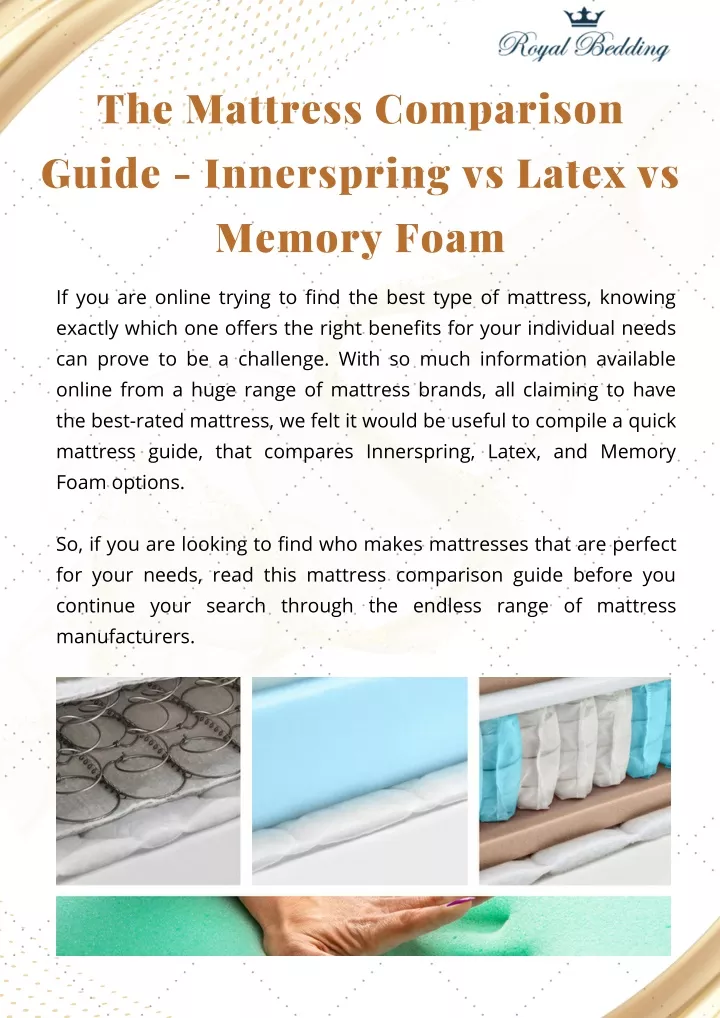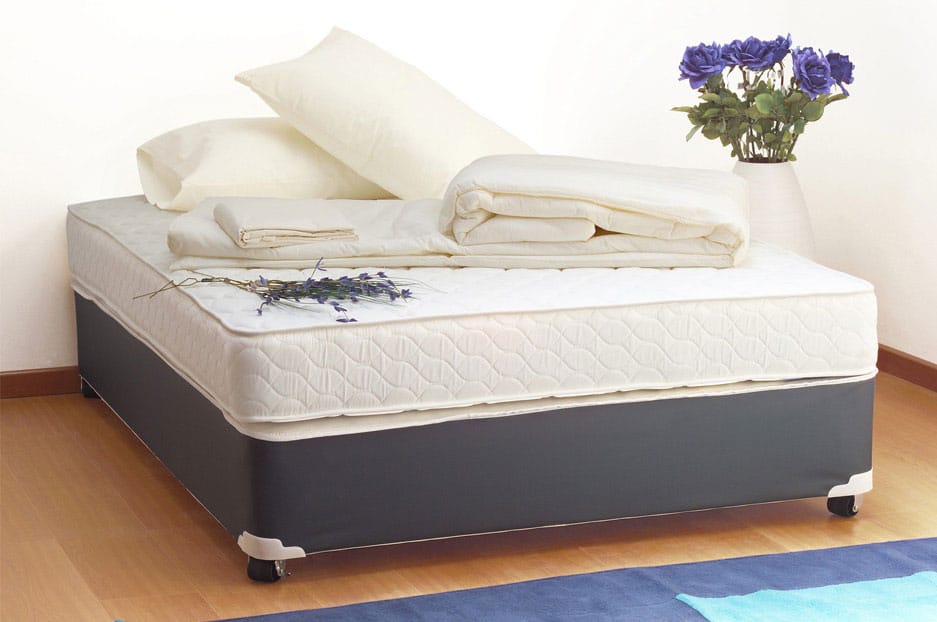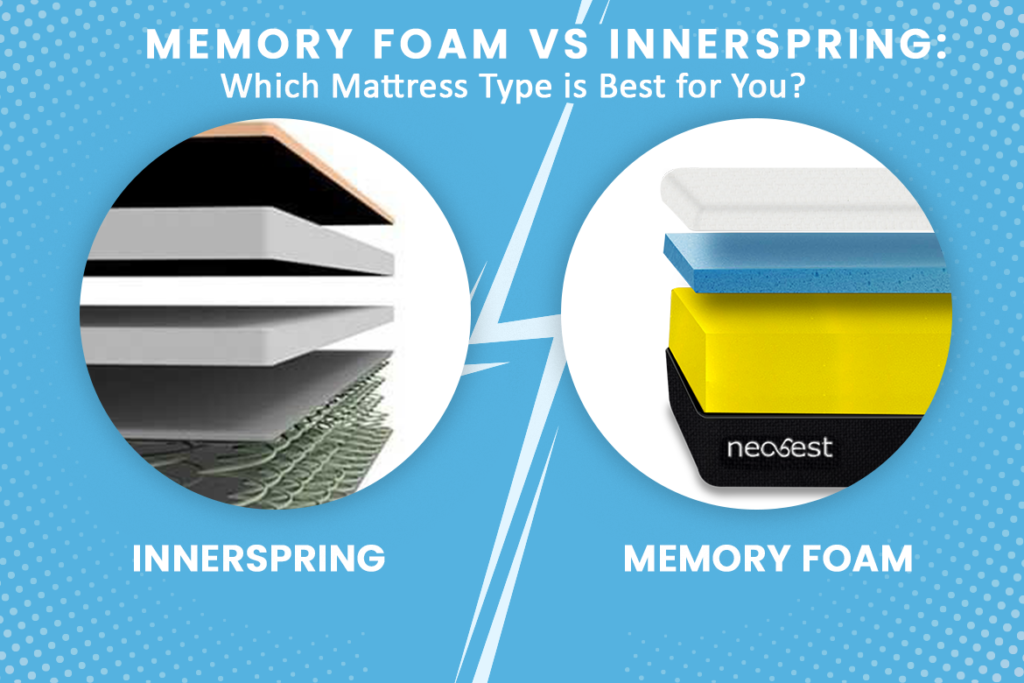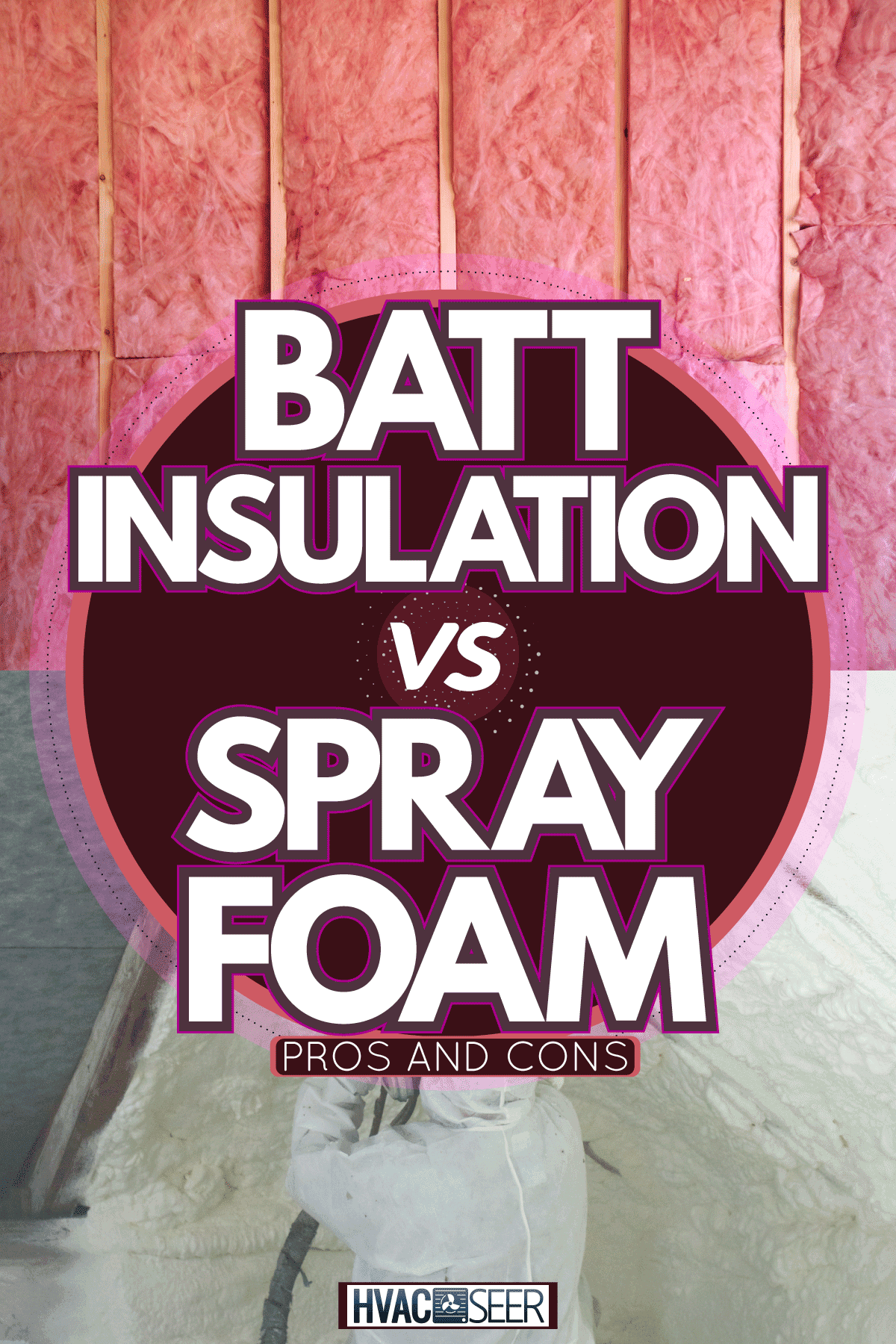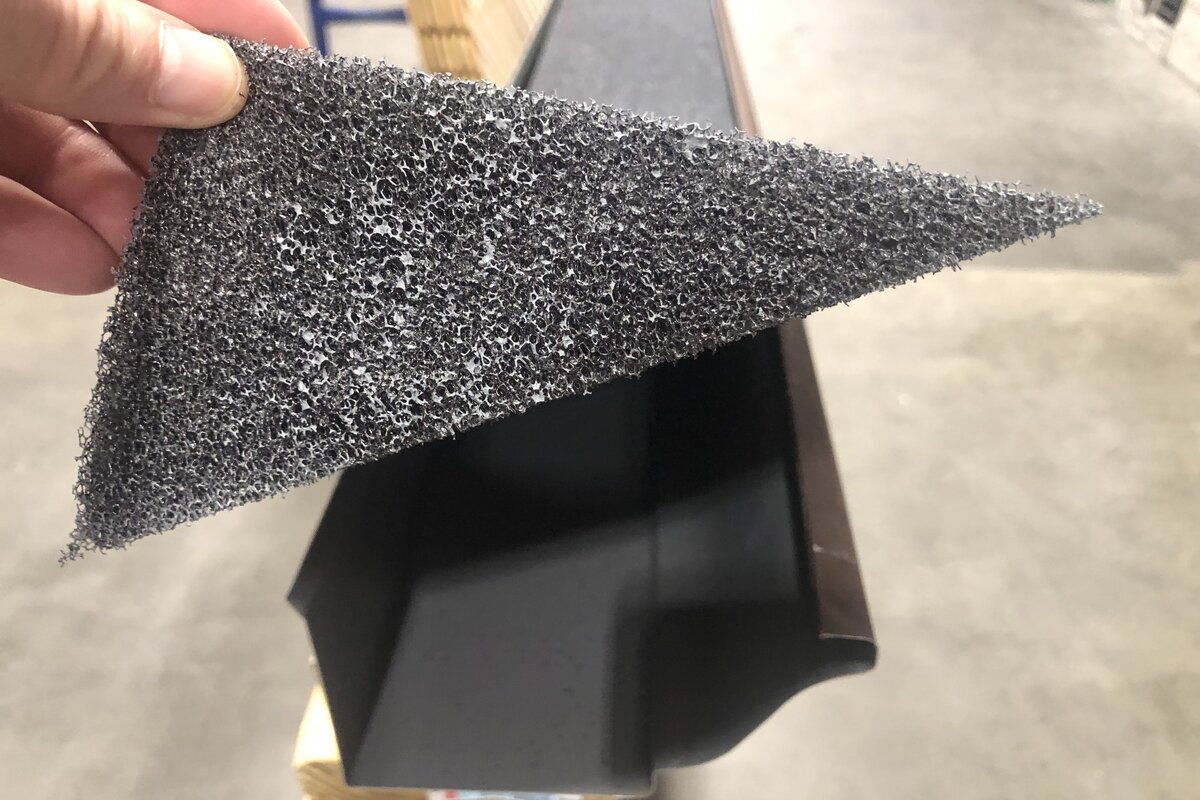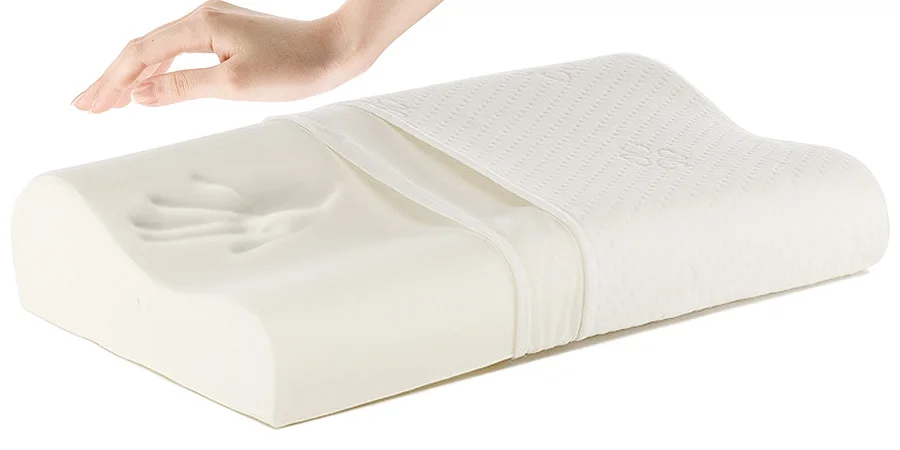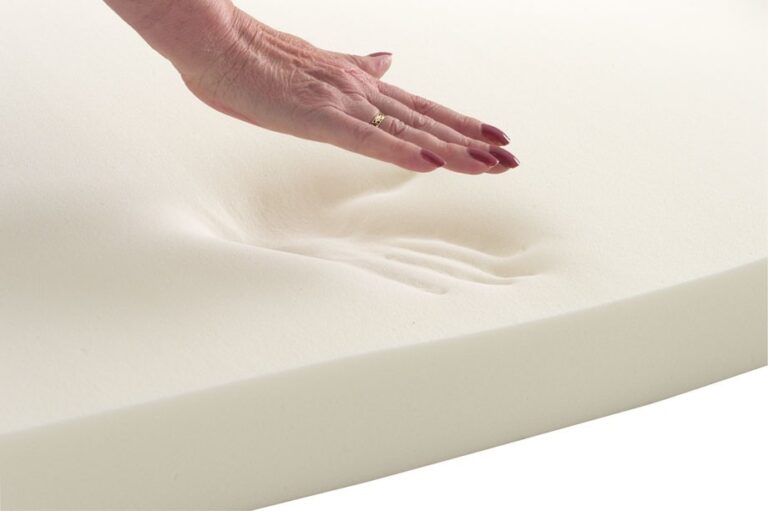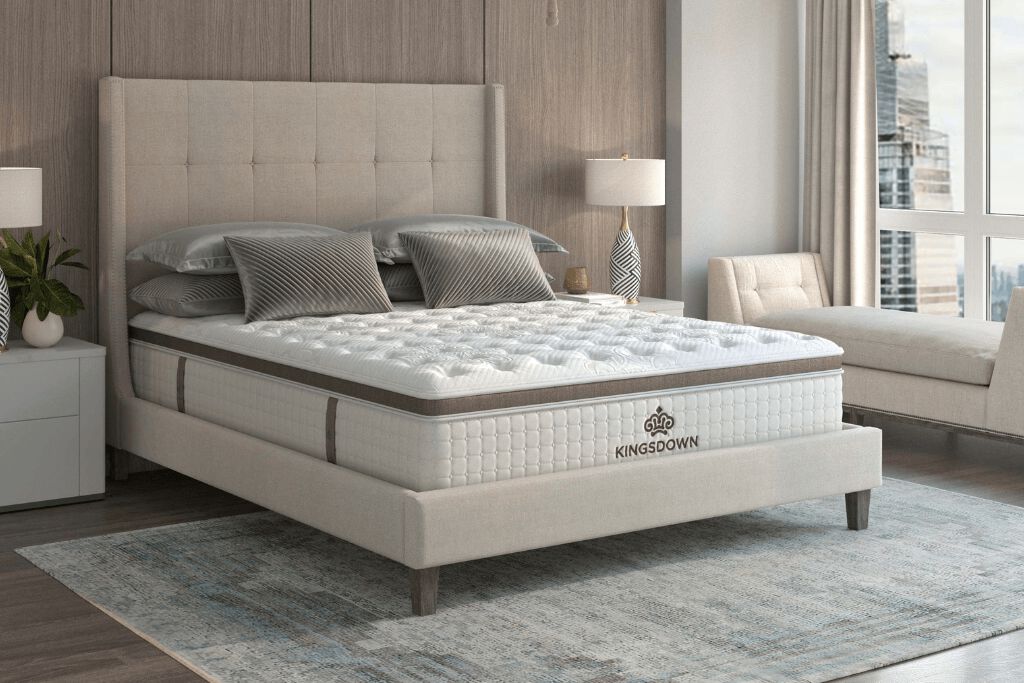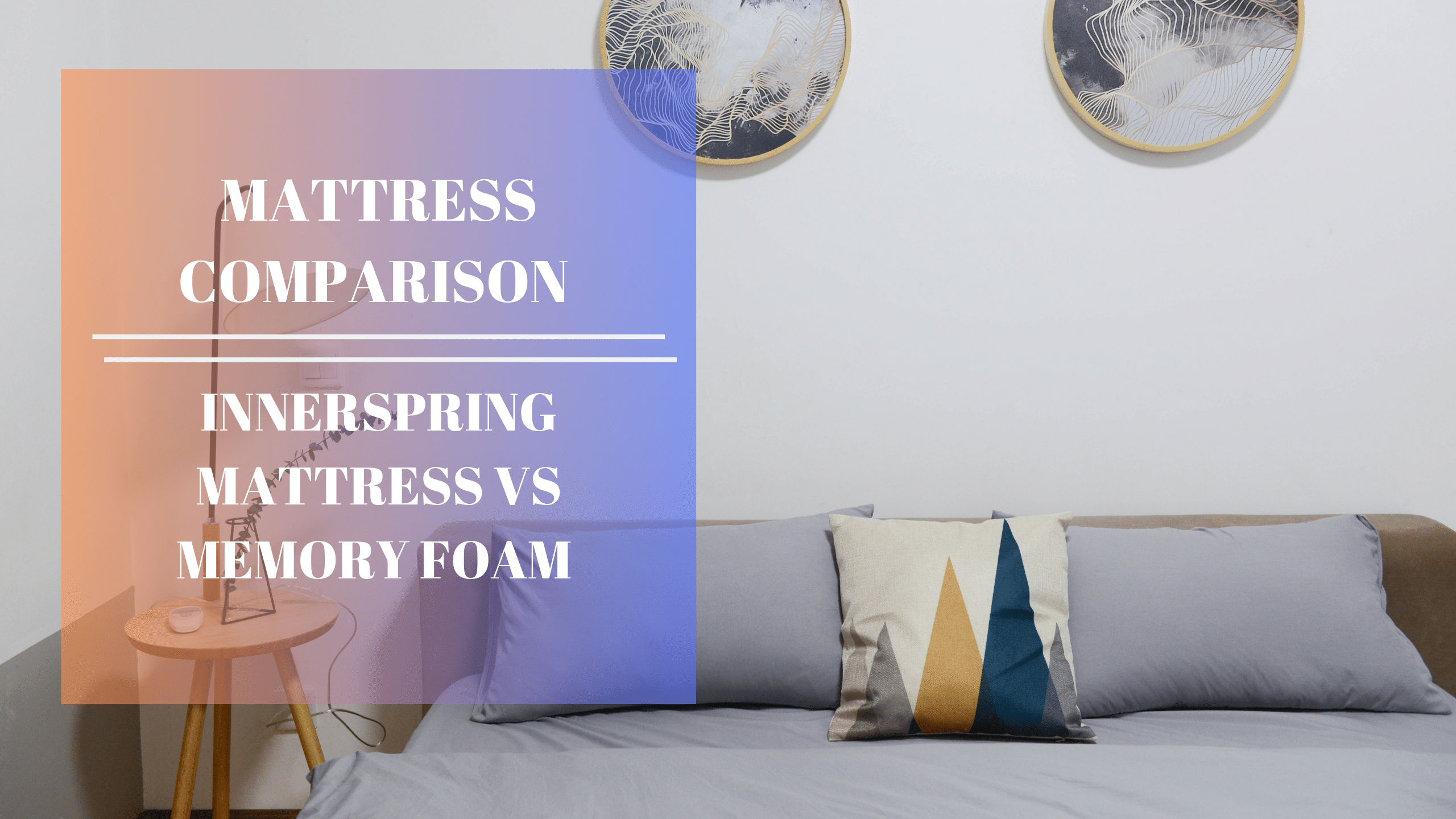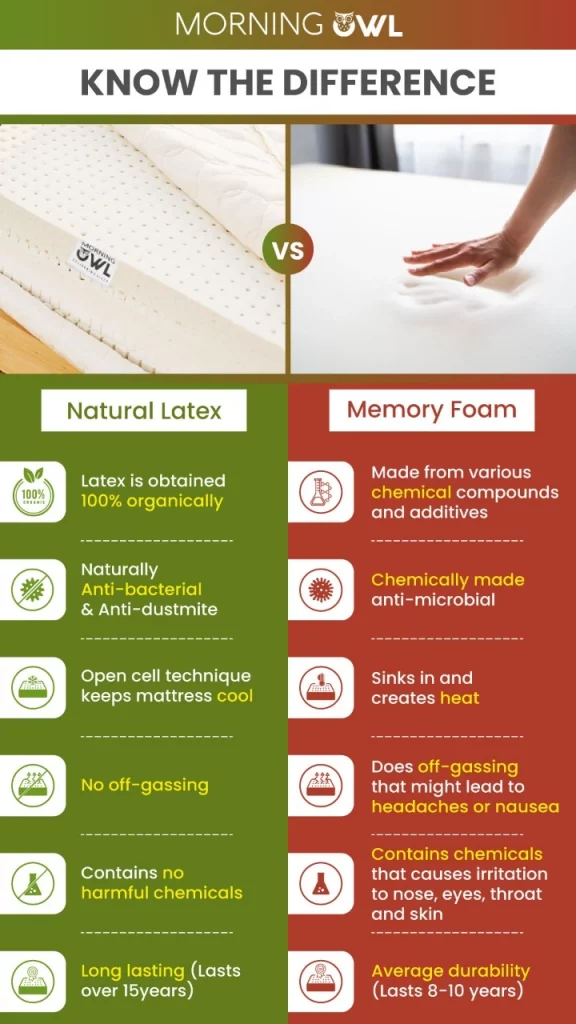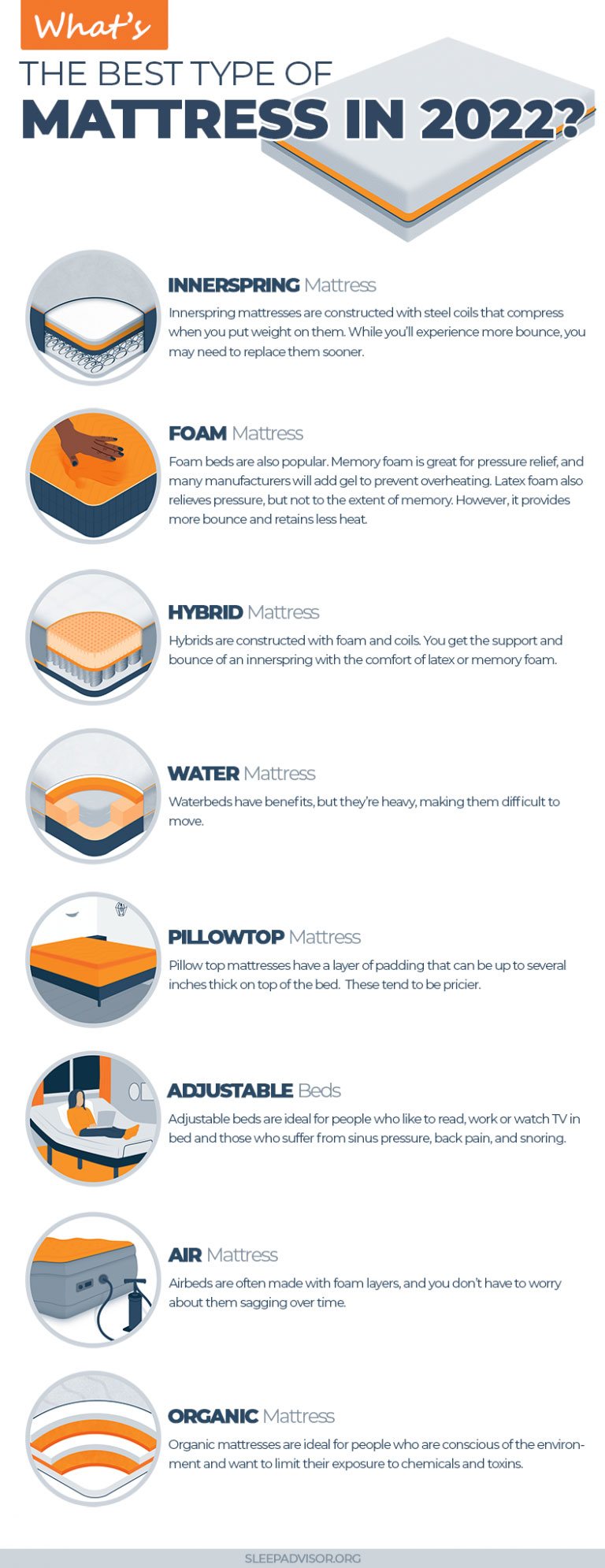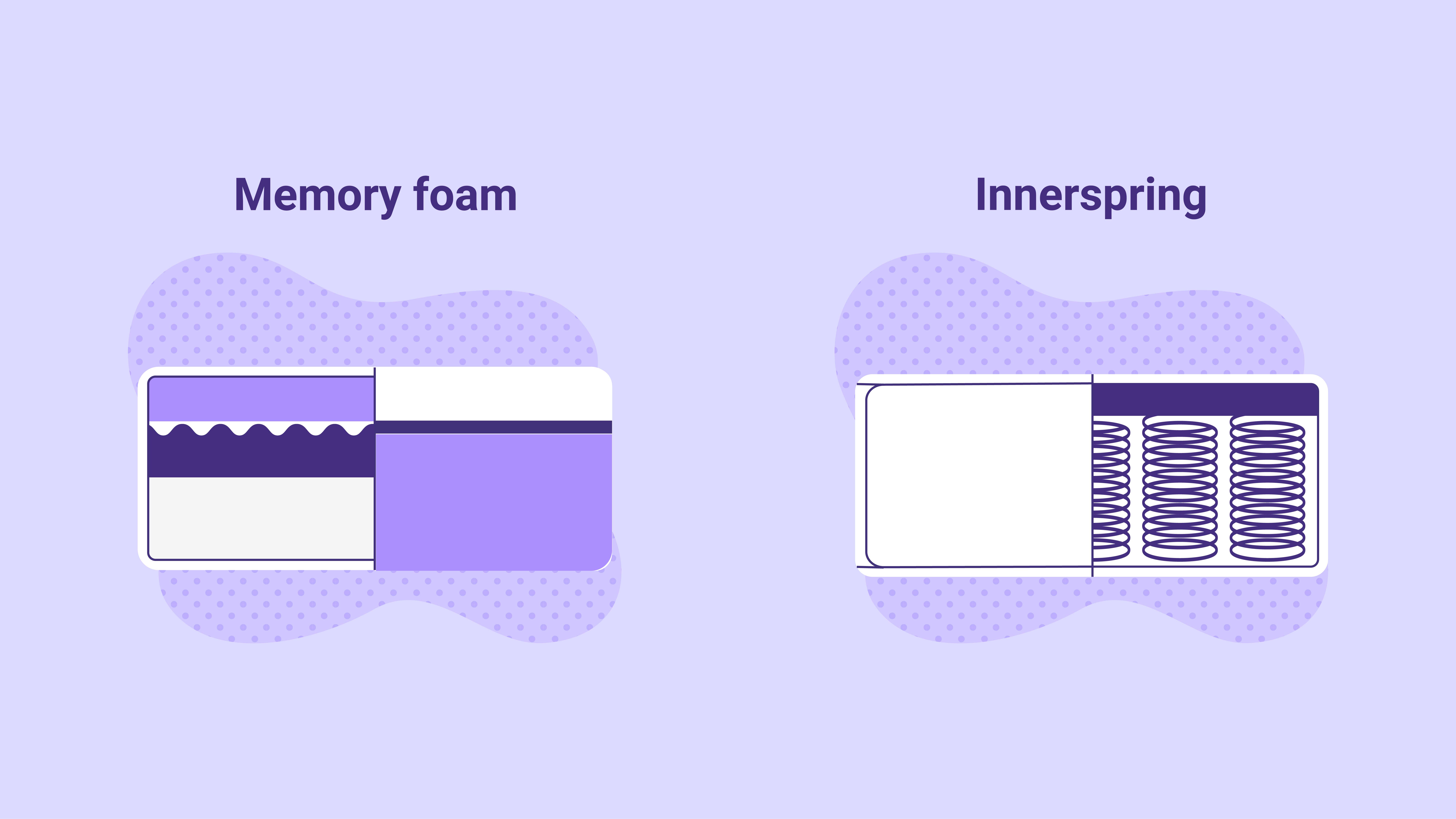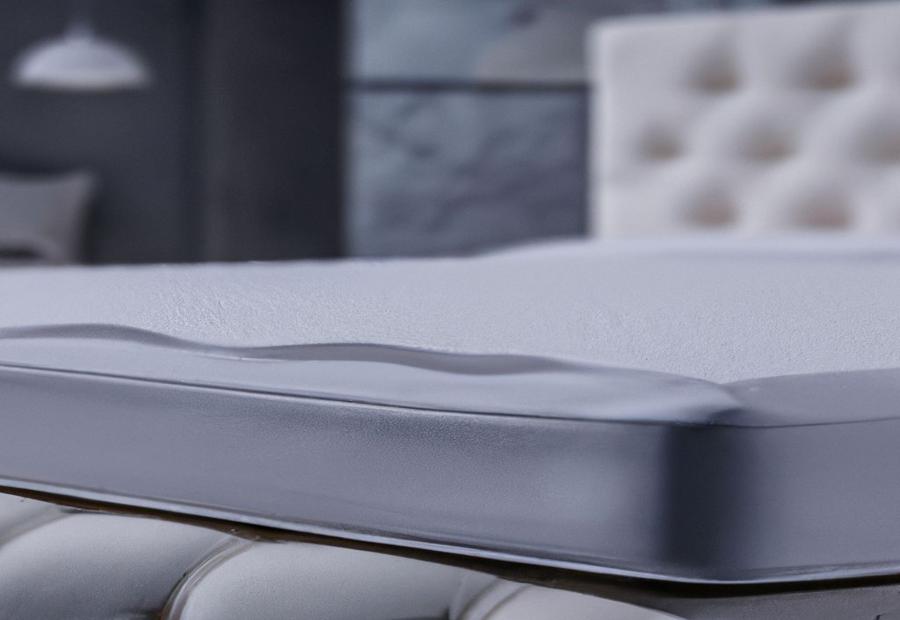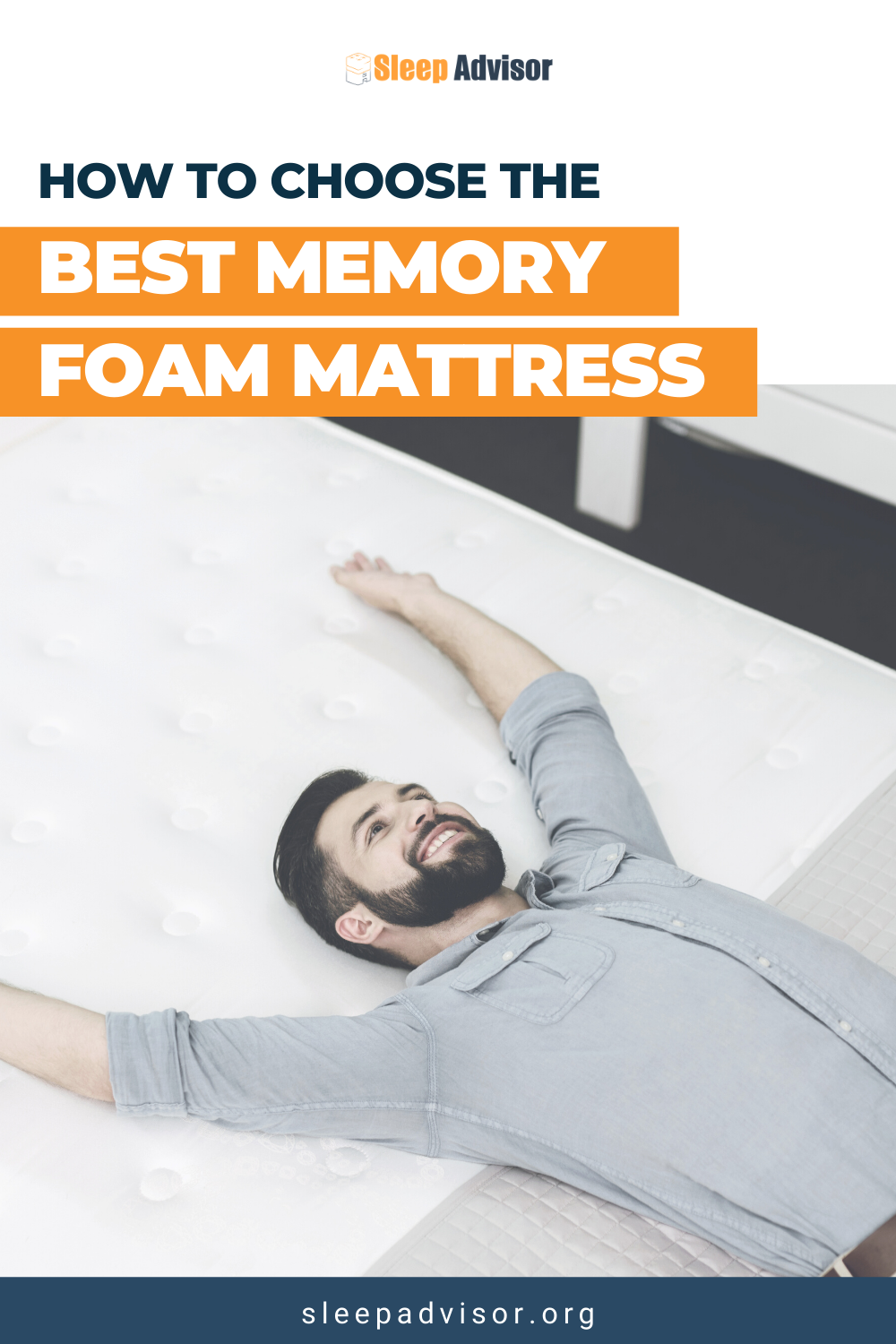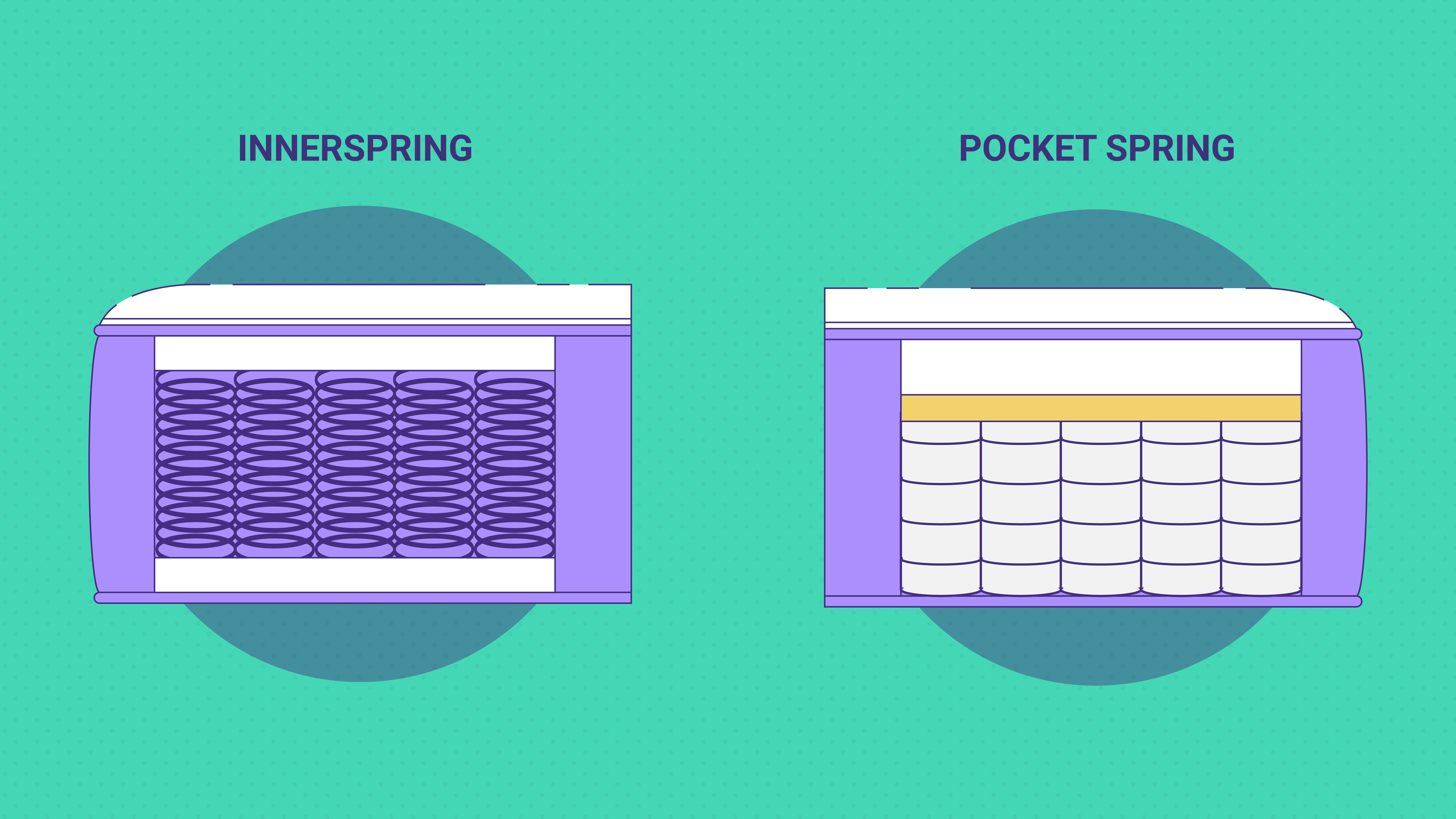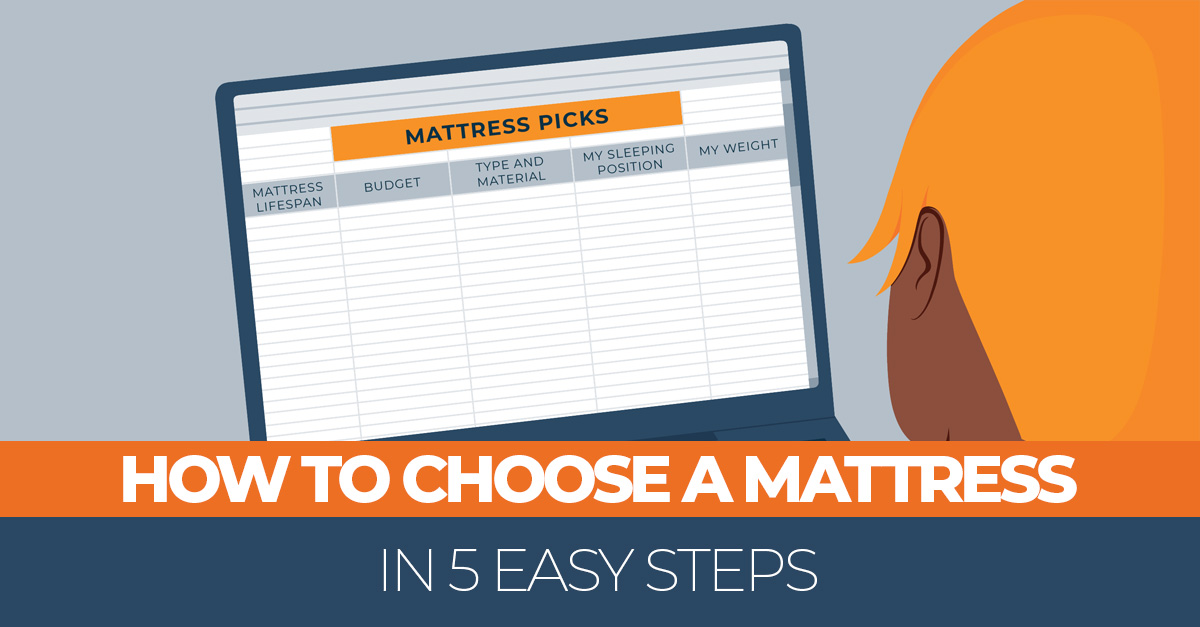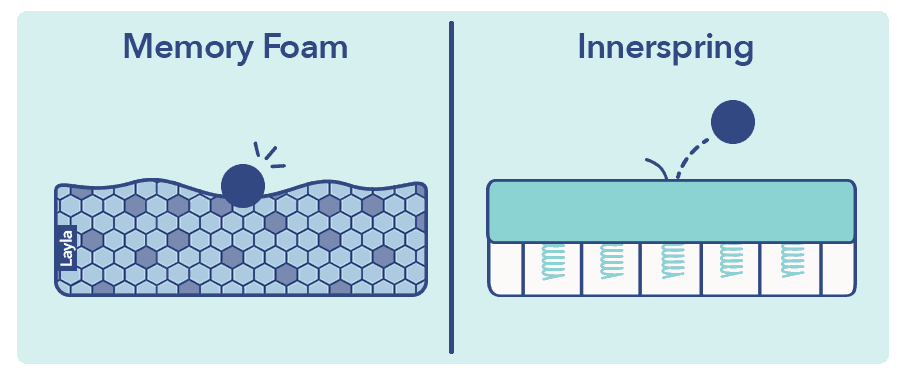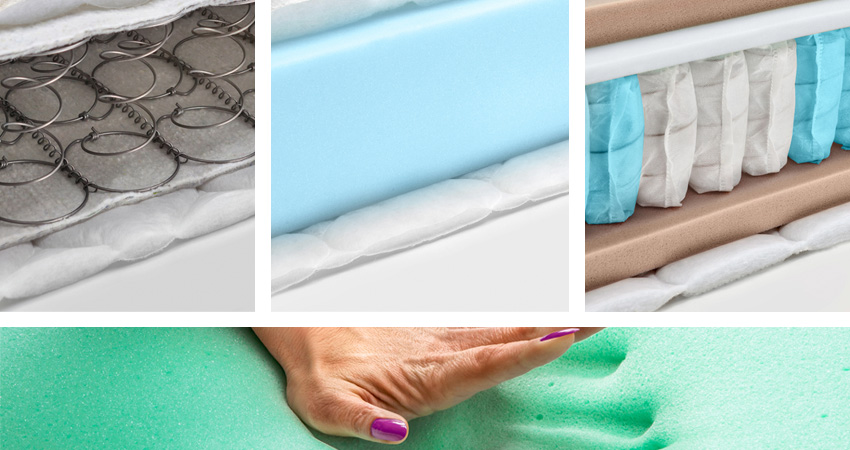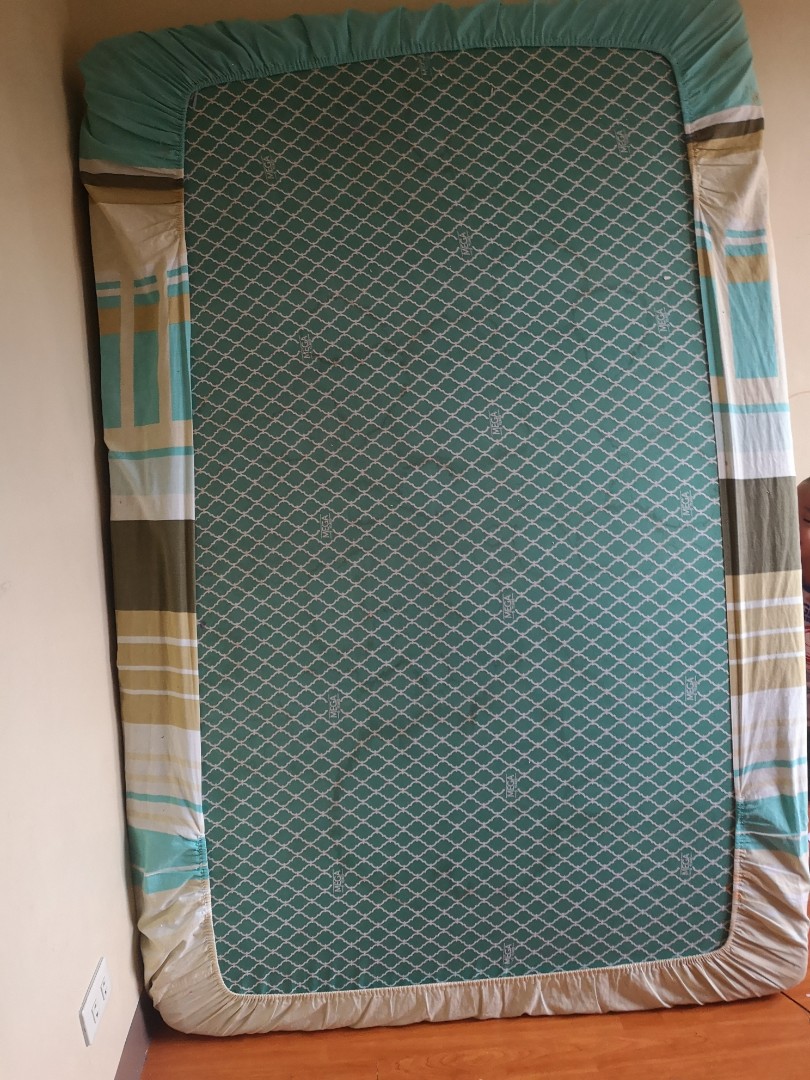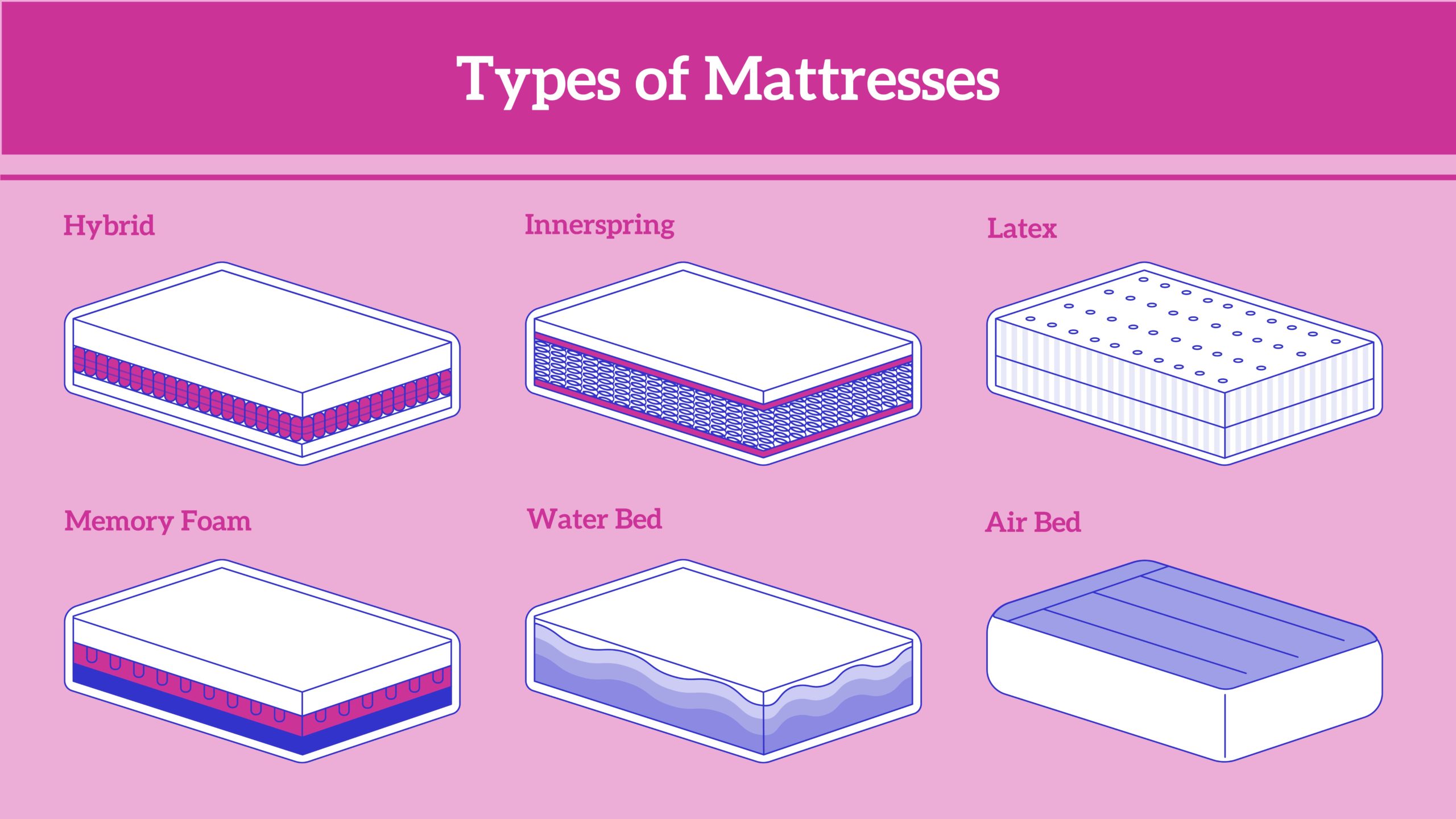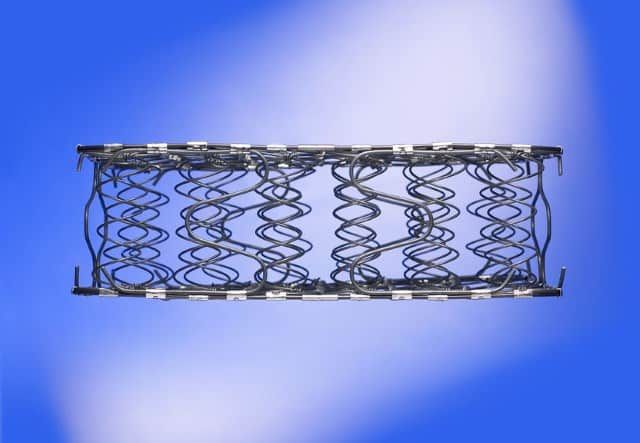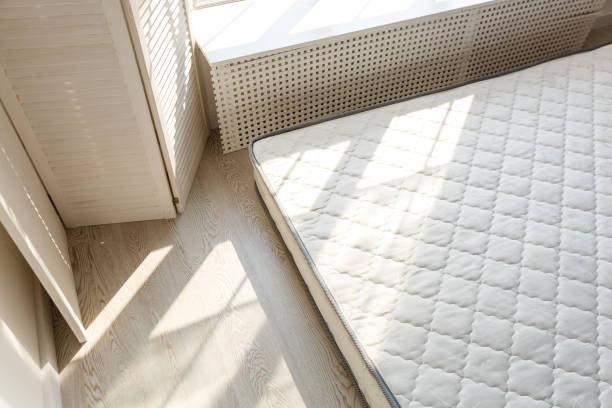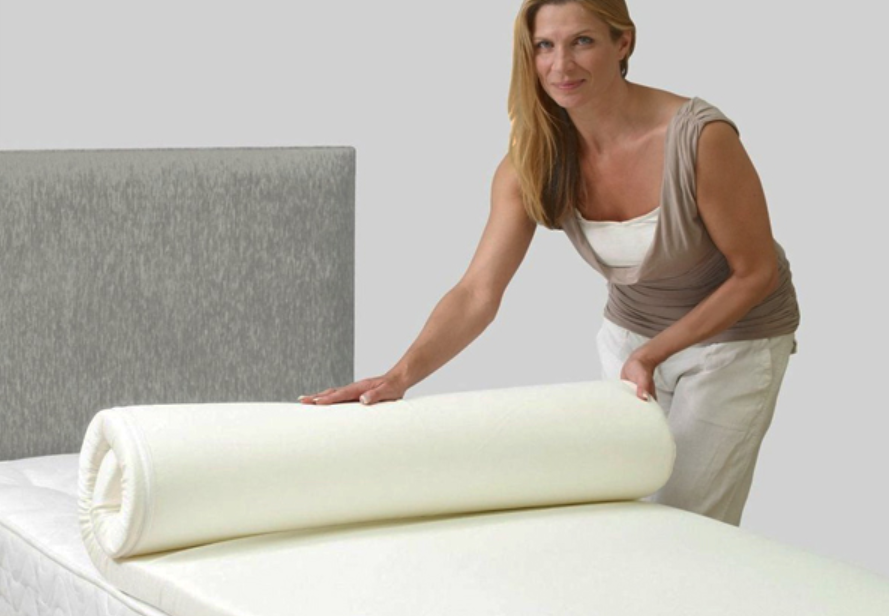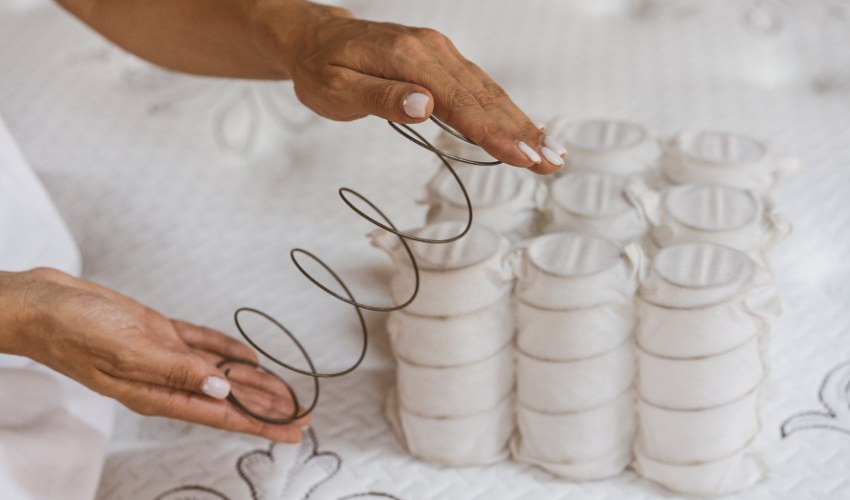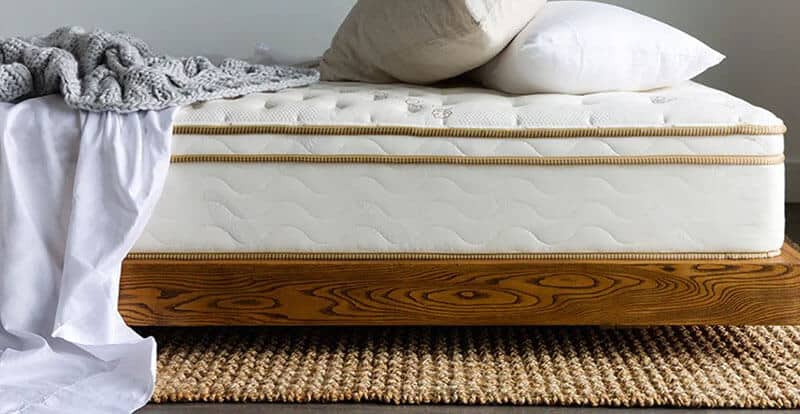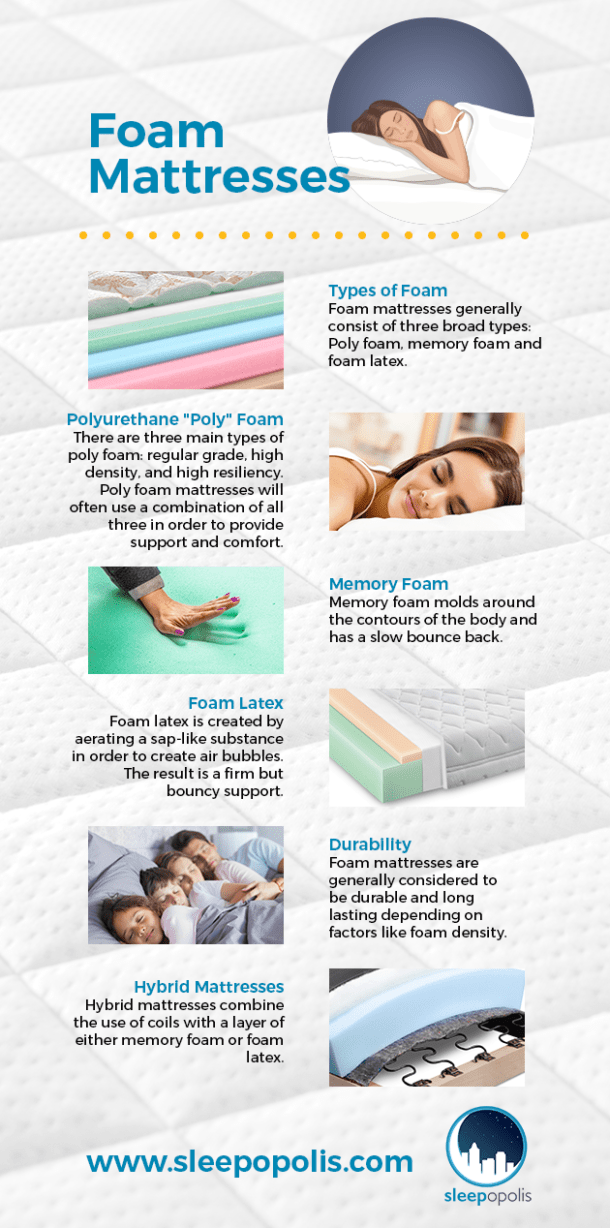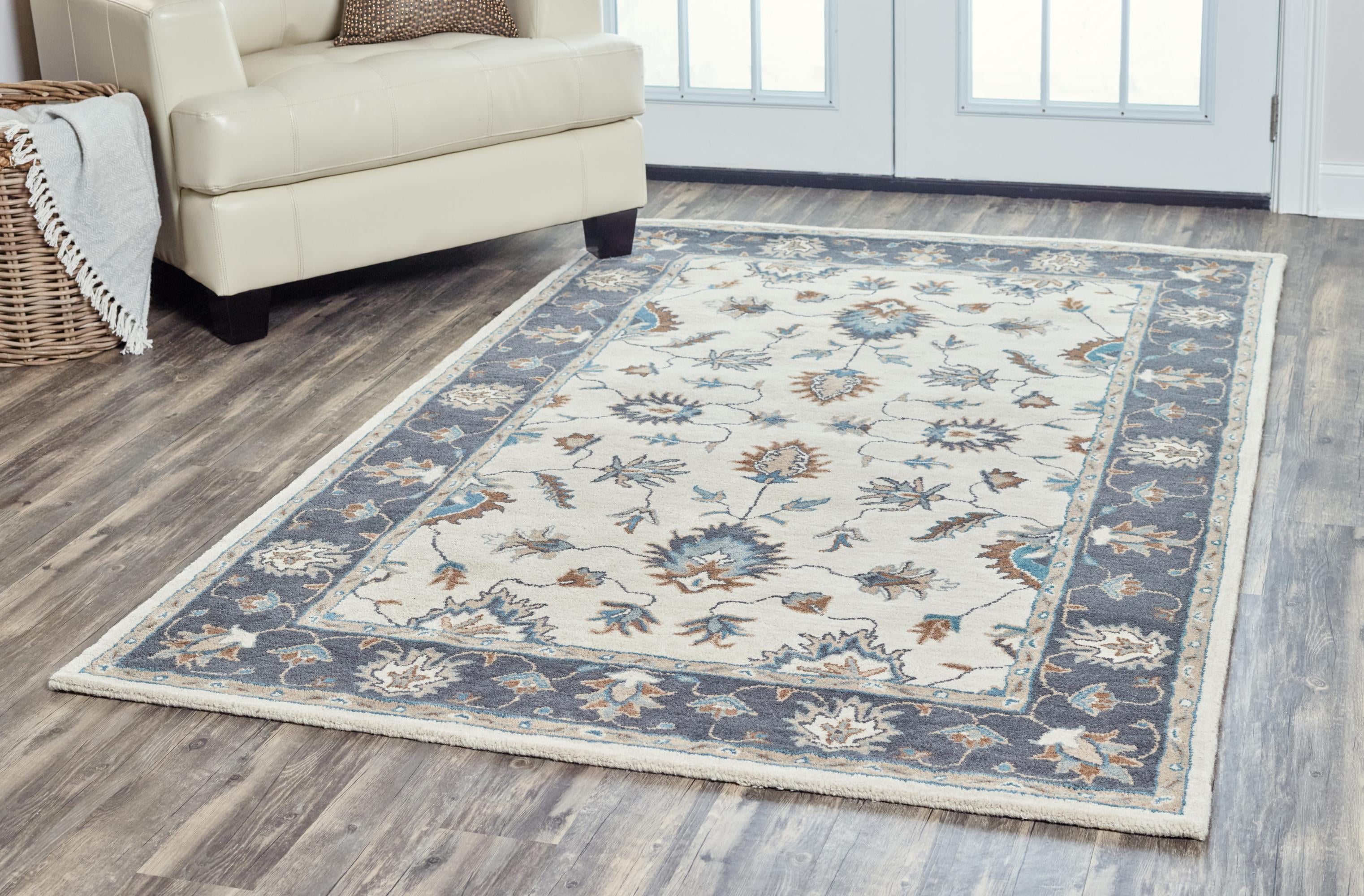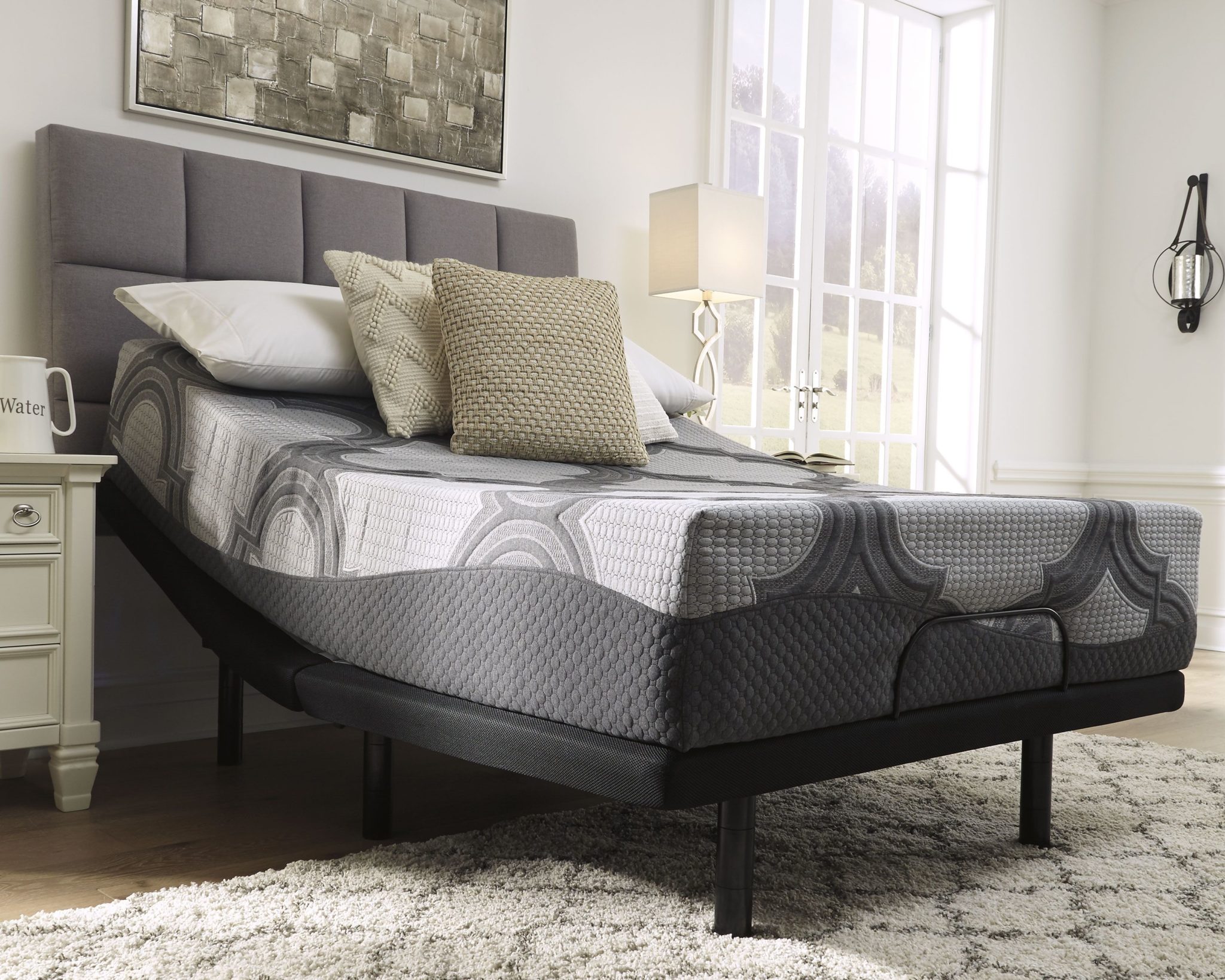When it comes to choosing a new mattress, one of the biggest decisions you'll have to make is whether to go with a foam or innerspring option. Both types of mattresses have their own unique benefits and drawbacks, so it's important to understand the differences between them before making a decision. In this article, we'll break down the pros and cons of foam and innerspring mattresses and help you determine which one is the best fit for your sleep needs. Foam vs Innerspring Mattresses: Which One is Right for You?
Let's start by looking at the advantages and disadvantages of foam and innerspring mattresses. Foam mattresses, particularly those made from memory foam, are known for their pressure-relieving properties. This is because the foam contours to your body and helps distribute your weight evenly, reducing pressure on your joints and muscles. This can be especially beneficial for people with chronic pain or those who prefer a softer sleeping surface. However, some people may find foam mattresses to be too hot or lacking in support. On the other hand, innerspring mattresses are made with a core of metal coils that provide support and bounce. This can be a plus for those who prefer a firmer mattress or need more support for their back. However, innerspring mattresses may not be as durable as foam ones and can be prone to sagging over time. Additionally, the metal coils can create pressure points, which may be uncomfortable for some sleepers. The Pros and Cons of Foam and Innerspring Mattresses
Now that we've covered the basics, let's dive deeper into the specific differences between foam and innerspring mattresses. One of the key factors to consider is motion transfer. Foam mattresses are known for their ability to isolate movement, meaning that if your partner tosses and turns, you're less likely to feel it on your side of the bed. Innerspring mattresses, on the other hand, may transfer more motion, which could be a concern for couples or light sleepers. Another important factor is temperature regulation. Foam mattresses, especially those made with gel-infused or plant-based foam, are designed to dissipate body heat and keep you cool throughout the night. Innerspring mattresses, with their open coil design, allow for better airflow and may be a better option for those who tend to sleep hot. Comparing Foam and Innerspring Mattresses: What You Need to Know
Ultimately, the best mattress for you will depend on your individual sleep preferences and needs. If you prefer a softer, more contouring feel, a foam mattress may be the way to go. If you need more support or tend to sleep hot, an innerspring mattress could be a better fit. It's also important to consider your sleeping position. Side sleepers may benefit from the pressure relief of a foam mattress, while back and stomach sleepers may prefer the support of an innerspring mattress. Foam vs Innerspring: Which Mattress Type is Better for Your Sleep?
Now that we've covered the main factors to consider, let's take a closer look at the construction and materials of foam and innerspring mattresses. Foam mattresses are typically made with layers of different types of foam, such as memory foam, latex foam, and polyfoam. These layers work together to provide comfort, support, and temperature regulation. Innerspring mattresses, as the name suggests, are made with metal coils, which may be individually wrapped or connected. These coils may be topped with layers of foam or other materials for added comfort. The Differences Between Foam and Innerspring Mattresses
Besides the feel and construction of the mattress, there are a few other factors to keep in mind when deciding between a foam or innerspring option. One is cost. Generally, foam mattresses are more expensive than innerspring mattresses, although this can vary depending on the brand and materials used. Another factor is durability. Foam mattresses, especially those made with higher-quality materials, tend to last longer than innerspring mattresses. Finally, you'll want to consider any specific sleep concerns you may have, such as back pain or allergies, and choose a mattress that can address those issues. Choosing Between a Foam or Innerspring Mattress: What to Consider
As mentioned earlier, foam mattresses tend to have a longer lifespan than innerspring mattresses. This is because the foam is able to retain its shape and support over time, while the metal coils in an innerspring mattress can become worn and lose their bounce. That being said, the quality of materials used and proper maintenance can also impact the durability of a mattress. Foam vs Innerspring: Which Mattress is More Durable?
Let's take a closer look at the materials used in foam and innerspring mattresses. Foam mattresses are typically made with layers of foam, with memory foam being the most popular. This type of foam is known for its ability to conform to your body and provide pressure relief. Innerspring mattresses, as mentioned before, are made with metal coils. These coils can vary in thickness, number, and shape, which can affect the feel and support of the mattress. Understanding the Construction of Foam and Innerspring Mattresses
As we mentioned earlier, your sleeping position can play a big role in determining the best type of mattress for you. Here's a breakdown of how foam and innerspring mattresses can benefit different sleepers: The Benefits of Foam and Innerspring Mattresses for Different Sleeping Positions
If you suffer from back pain, choosing the right mattress is crucial for getting a good night's sleep. For some people, a foam mattress may be the best option, as it can provide pressure relief and contouring support for the spine. However, others may find that the extra support and firmness of an innerspring mattress helps alleviate their back pain. It's important to consult with your doctor and test out different mattress options to find the best fit for your specific needs. In conclusion, there is no one-size-fits-all answer when it comes to choosing between a foam or innerspring mattress. It's important to consider your individual sleep needs and preferences, as well as the construction and materials of each type of mattress. By doing your research and testing out different options, you can find the perfect mattress for a good night's sleep. Foam vs Innerspring: Which Mattress Type is Better for Back Pain?
The Battle of the Mattresses: King Foam vs Innerspring

Introduction
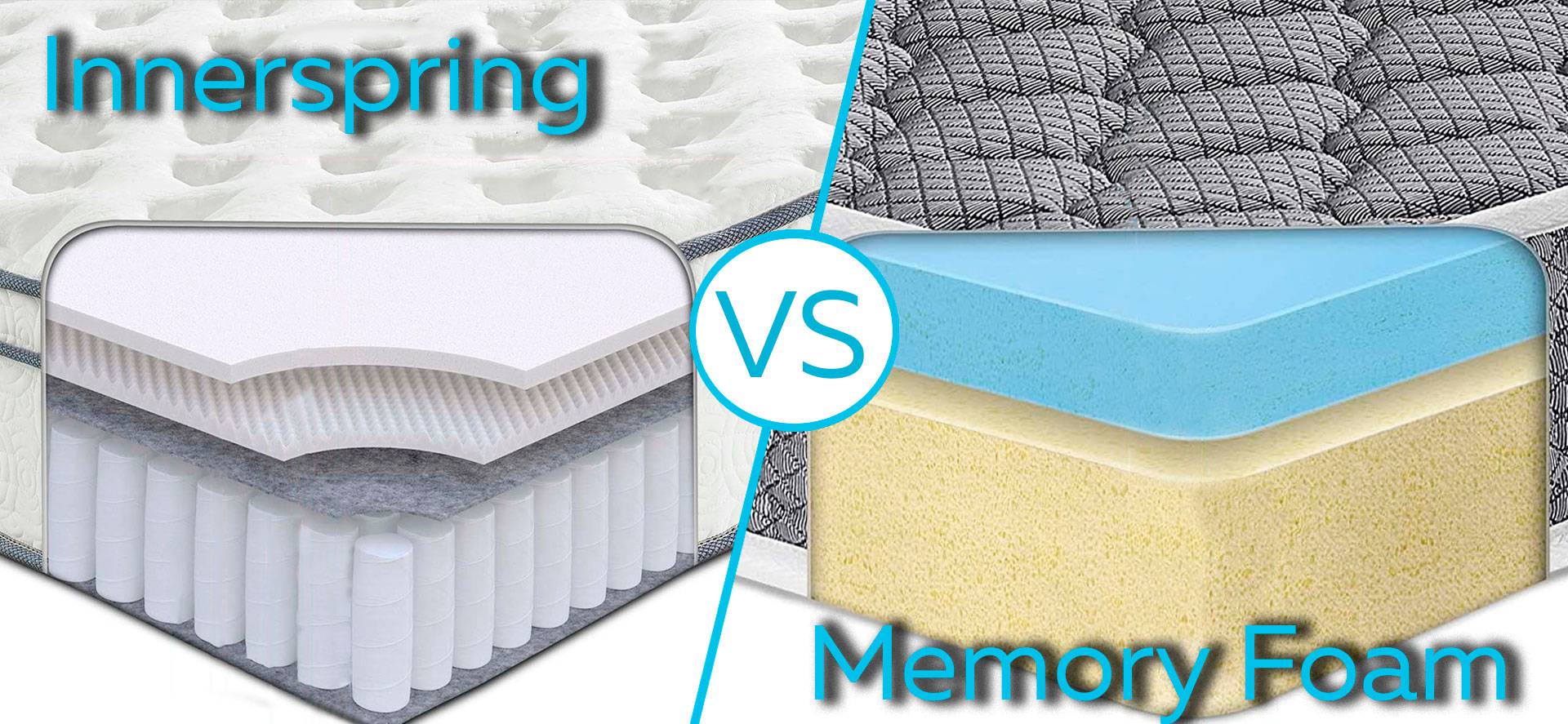 When it comes to choosing the perfect mattress for your bedroom, there are a lot of factors to consider. One of the most important decisions you'll have to make is whether to go for a king foam or an innerspring mattress. This may seem like a small decision, but it can make a huge impact on your overall sleep experience. In this article, we'll dive into the differences between these two types of mattresses and help you determine which one is the right fit for your house design.
When it comes to choosing the perfect mattress for your bedroom, there are a lot of factors to consider. One of the most important decisions you'll have to make is whether to go for a king foam or an innerspring mattress. This may seem like a small decision, but it can make a huge impact on your overall sleep experience. In this article, we'll dive into the differences between these two types of mattresses and help you determine which one is the right fit for your house design.
What is a King Foam Mattress?
 King foam mattresses
are made out of memory foam, a material that was first developed by NASA in the 1960s. This type of mattress is known for its ability to conform to your body's shape, providing personalized support and pressure relief. The foam is also known for its motion isolation properties, making it a great choice for couples who may have different sleeping patterns.
King foam mattresses
are made out of memory foam, a material that was first developed by NASA in the 1960s. This type of mattress is known for its ability to conform to your body's shape, providing personalized support and pressure relief. The foam is also known for its motion isolation properties, making it a great choice for couples who may have different sleeping patterns.
Benefits of a King Foam Mattress
 Not only does a king foam mattress provide excellent support and pressure relief, but it also has several other benefits that make it a popular choice among homeowners. First and foremost,
memory foam
is hypoallergenic, making it perfect for those who suffer from allergies. It is also resistant to dust mites and molds, ensuring a clean and healthy sleep environment. Additionally, foam mattresses are known for their durability, with some lasting up to 15 years with proper care.
Not only does a king foam mattress provide excellent support and pressure relief, but it also has several other benefits that make it a popular choice among homeowners. First and foremost,
memory foam
is hypoallergenic, making it perfect for those who suffer from allergies. It is also resistant to dust mites and molds, ensuring a clean and healthy sleep environment. Additionally, foam mattresses are known for their durability, with some lasting up to 15 years with proper care.
What is an Innerspring Mattress?
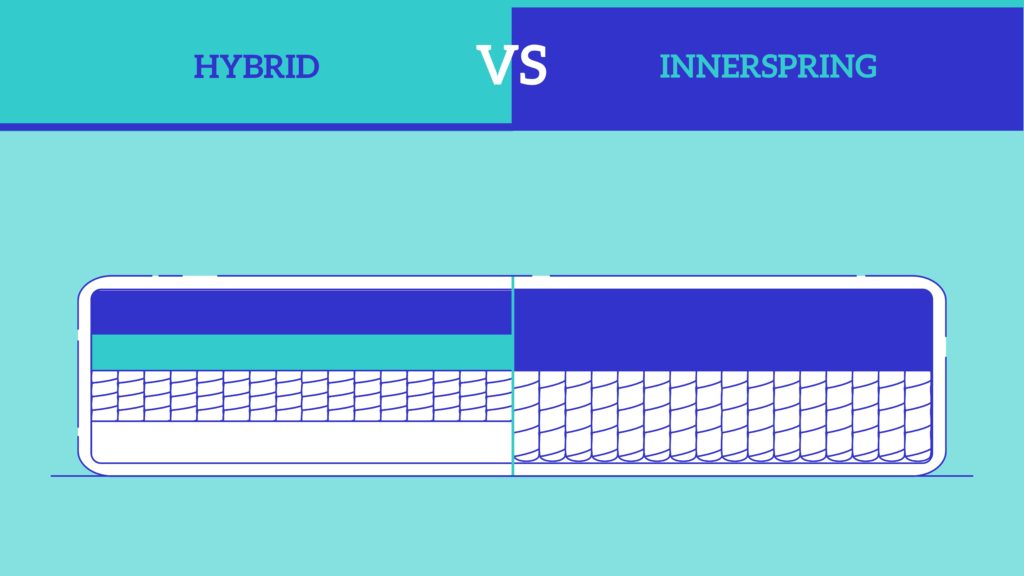 On the other hand,
innerspring mattresses
are constructed with a support system of metal coils or springs and topped with a comfort layer of padding. These mattresses have been around for a long time and are the most traditional type of mattress. They come in various firmness levels and are often more affordable compared to foam mattresses.
On the other hand,
innerspring mattresses
are constructed with a support system of metal coils or springs and topped with a comfort layer of padding. These mattresses have been around for a long time and are the most traditional type of mattress. They come in various firmness levels and are often more affordable compared to foam mattresses.
Benefits of an Innerspring Mattress
 One of the main advantages of an innerspring mattress is its
breathability
. The open space between the coils allows for better air circulation, making it a cooler sleep experience, especially for those who tend to sleep hot. Innerspring mattresses also offer a firmer feel, which some people prefer for better spinal alignment. They also tend to have a longer lifespan compared to foam mattresses.
One of the main advantages of an innerspring mattress is its
breathability
. The open space between the coils allows for better air circulation, making it a cooler sleep experience, especially for those who tend to sleep hot. Innerspring mattresses also offer a firmer feel, which some people prefer for better spinal alignment. They also tend to have a longer lifespan compared to foam mattresses.
Which One is Right for You?
 Both types of mattresses have their unique benefits, and the decision ultimately comes down to personal preference. If you are looking for personalized support and pressure relief, a king foam mattress may be the better choice. However, if you prioritize breathability and a firmer feel, then an innerspring mattress may be the way to go. Consider your body's needs and your budget before making a decision, and be sure to test out different options before committing to one.
Both types of mattresses have their unique benefits, and the decision ultimately comes down to personal preference. If you are looking for personalized support and pressure relief, a king foam mattress may be the better choice. However, if you prioritize breathability and a firmer feel, then an innerspring mattress may be the way to go. Consider your body's needs and your budget before making a decision, and be sure to test out different options before committing to one.
Conclusion
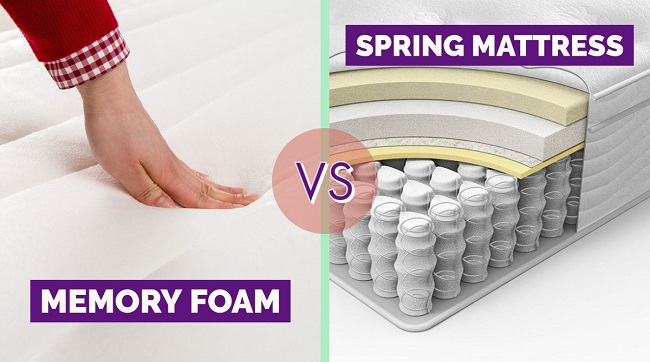 In conclusion, when it comes to choosing between a king foam and an innerspring mattress, there is no clear winner. Each has its own advantages and disadvantages, and the decision ultimately depends on what you value most in a mattress. Whichever type you choose, make sure to invest in a high-quality mattress to ensure a good night's sleep and a healthy lifestyle.
In conclusion, when it comes to choosing between a king foam and an innerspring mattress, there is no clear winner. Each has its own advantages and disadvantages, and the decision ultimately depends on what you value most in a mattress. Whichever type you choose, make sure to invest in a high-quality mattress to ensure a good night's sleep and a healthy lifestyle.

